Worldwide, peas are grown in backyard gardens. The thin and sensitive pods of snow peas are eaten until just the tiniest seeds of the edible peas remain within. When the peas within a sugar snap pea are almost grown, and the pods are still soft and juicy, they are ready to eat. It’s not only the peas you can eat; the vines are tasty too. The young, sensitive tips of shoots can be steamed or sautéed. Below we learn how to grow pea plants at home faster and the best tips to increase flowering, fruiting, and yield.
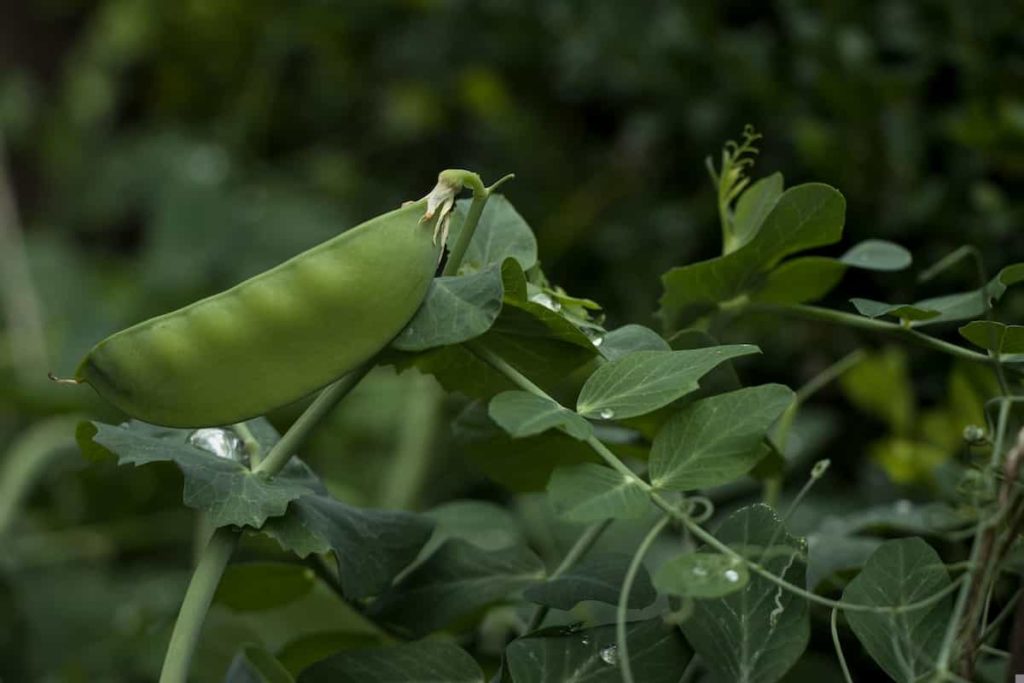
How to grow peas faster
Know when to plant
Before the final spring frost, put seeds directly in the garden. Pea plants are somewhat frost-hardy; however, lengthy spells of subfreezing weather can be too much for your first plantings. You can shelter your plants in cold places using a “cold frame.” Planting in late summer or autumn, typically six to eight weeks before your expected first fall frost date, is possible in many places.
Choose the right cultivars
As opposed to hybrids, almost all pea types sold now are open-pollinated. Peas can grow to maturity, saving their seeds for the following year. Vines of various kinds can reach heights of five feet or more. These vines need a trellis to climb up. Peas can be harvested over a longer time frame with these strains. These “bush” varieties often reach a height of only a few feet, bloom and produce fruit all at once, and are so named. Disease resistance can be increased in leafless or partially leafless vines.
They can be more stable without a trellis since the tendrils bunch together. Varieties of edible pods can also be distinguished by whether or not they are strung or stringless, as well as by the number of days it takes to mature. Various pea cultivars are available at garden stores and in seed catalogs. Root rots and powdery mildew are two of the most frequent diseases affecting peas; however certain types are immune to these problems. To facilitate germination in cool environments, some commercially available seed is treated with a fungicide.
In case you missed it: How to Propagate Succulents from Leaves and Cuttings: 10 Easy Steps for Beginners
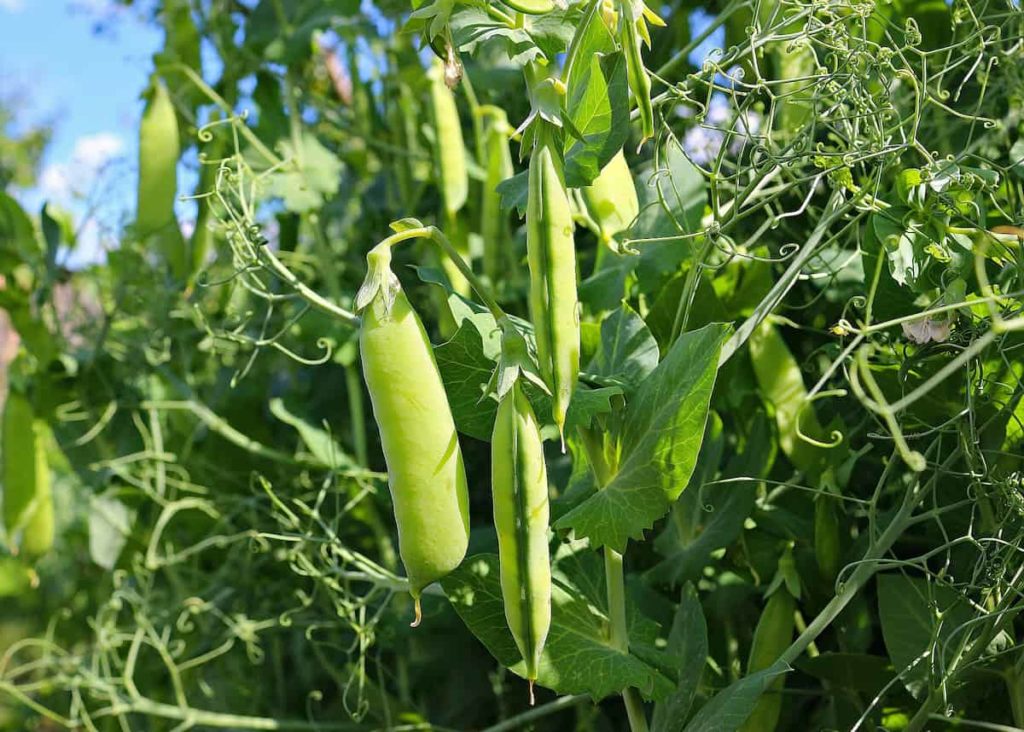
Choosing the right spot
Choose a sunny, well-drained spot. Do not plant your garden in a formerly used spot to cultivate peas. Since pea-specific pests and diseases can persist in the soil for a while, it’s better to rotate crops every few years. Plants can also be grown in containers. Install raised garden beds if you have poor soil drainage or heavy spring rains.
Provide artificial light
To a greater extent than with natural sunlight, pea plants thrive when exposed to artificial light. Since artificial light can be provided around the clock, your plant will always be getting the optimal amount of growth stimulation. Light is essential for plant growth; therefore, giving your pea plants as much of it as possible can speed up their daily rate of development. More effective plant development can be achieved using colored artificial light.
The range of colors in natural light is wide, although it is mostly comprised of yellows and greens. When it comes to chlorophyll-based photosynthesis, like in pea plants, green light is not absorbed. Most plant photosynthesis occurs in response to blue and red UV light. The effectiveness with which a plant absorbs UV radiation can be maximized by using red and blue bulbs in growing lights or light filters.
Provide the right temperature and humidity
Although cold-tolerant, peas thrive in temperatures between 60 and 70 degrees Fahrenheit. Plant growth will slow significantly if the temperature rises over 85 degrees Fahrenheit. Humidity isn’t a concern as long as the soil’s moisture requirements are satisfied.
Feed your pea plants well
Peas can be aided in their development in several different ways. One of the few problems that pea growers face is seed rot. Therefore it’s essential to ensure your garden soil drains effectively if you want to produce peas successfully. Do not plant peas in damp regions since the seeds can perish before sprout. To ensure that your peas have a good drainage system, you can increase the bed by six to eight inches if required.
In case you missed it: How to Grow Zinnias from Seeds: Guide and Steps to Propagation, Planting, and Care
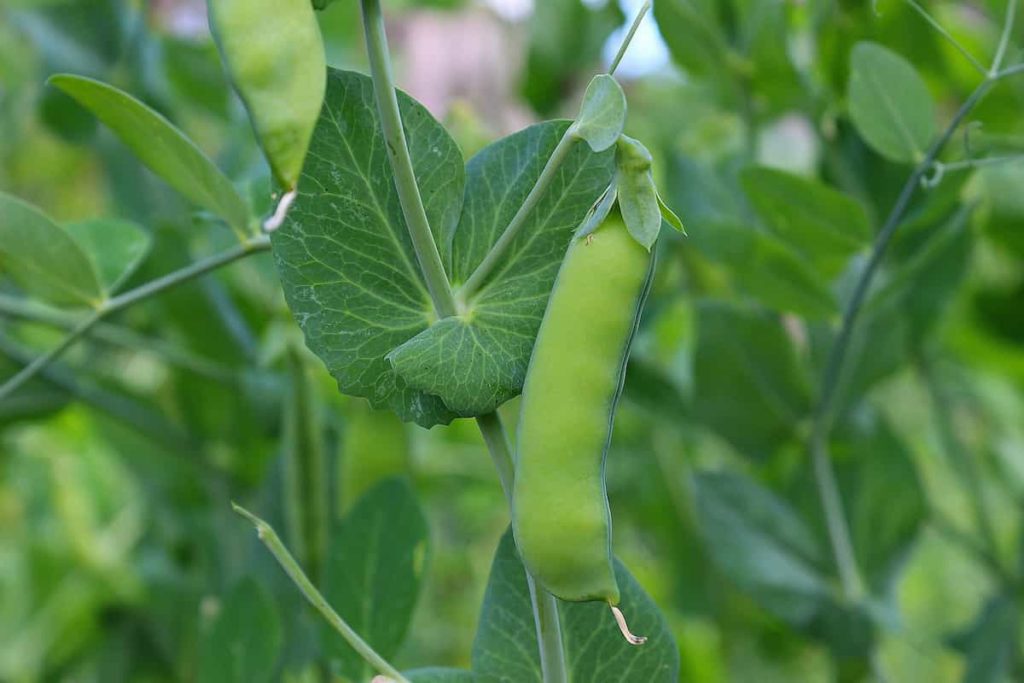
If you want your peas to flourish and yield the most pods possible, adjusting the soil a little before planting them is a good idea. Preparing the beds by turning them over in the autumn and adding 2 to 3 inches of compost to the soil in preparation for planting the following spring can help your pets thrive.
The beds can also be amended with manure, although composed is recommended since manure is often heavy with nitrogen, and peas can generate nitrogen. Wood ashes or bonemeal added to the soil before planting can offer your peas additional phosphorus and potassium without increasing nitrogen levels. This would divert plant energy toward growing leaves rather than developing blooms and pods.
The best approach to ensure your pea plants achieve their full height potential and produce an abundance of pods is to give them something to climb on or wrap around. The recommended support height for the pea type you’re planting should be found on the back of the seed package, so you can start preparing the framework. Peas, once germinated, can grow as high as a trellis or fence, ranging from two to eight feet.
Control pests and diseases
Insects and other pests can stunt a plant’s development, so doing everything you can to keep them at bay can help your pets thrive. The undersides of leaves are often invaded by tiny bugs called aphids, which are a major problem for pea plants. A heavy infestation of aphids on a pea plant may need the application of an insecticidal spray, but a light infestation can be dealt with by simply hosing the plant down with a garden hose. Both neem oil and pyrethrin are effective natural treatments for aphids.
If you want your pea plants to develop quickly, selecting disease-resistant kinds is best. Diseases aren’t usually a concern for pea plants, although a few might be a problem in certain regions. Also, diseases can affect your pea plants, including powdery mildew, fusarium wilt, root rot, and pea enation mosaic virus. Rotating crops to lessen the risk of soil-borne diseases affecting your pea plants is recommended. To get the most out of the soil, grow deeper-rooted oilseeds or wheat between your pea harvests.
Be careful while watering your peas
Peas thrive in the colder, wetter months of the year, so you may not even need to water them. Peas may require extra watering in dry springs if you want them to develop well. If you want to keep the vines healthy, water the soil instead than the plants. Water deeply, at least an inch once a week throughout the growing season, to keep the soil moist but not soggy. Sandy soils may need more frequent irrigation. Mulch three to four inches thick and made of grass clippings, weed-free straw, or another organic material can help maintain soil moisture and discourage weed growth.
In case you missed it: 21 Houseplants You Can Propagate from Cuttings: An Easy and Best Planting Guide
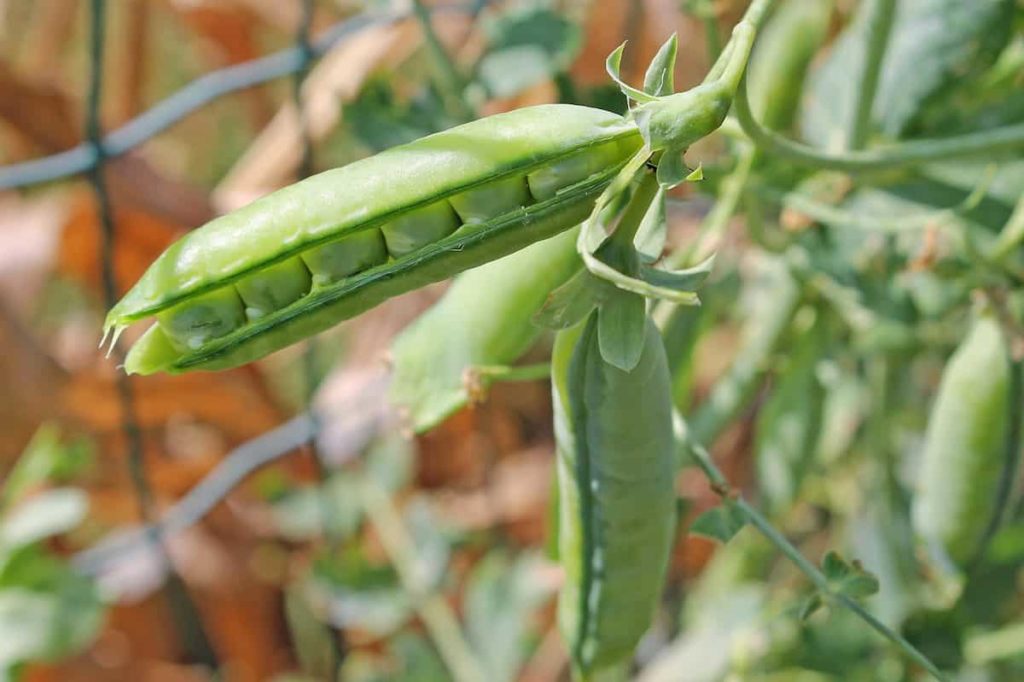
Control weeds
The soil should be prepared for planting by hoeing or using other equipment and then pulling out any big weeds by hand. Peas have a better chance of survival against weeds if given a head start. However, the pea plants will not thrive if the weeds take the initiative. Peas’ roots can grow rather near the soil’s surface. Not going in too deep with your gardening is crucial. Take care not to trample the flowers or the grass. The dense quantity of pea plants in a single row helps keep the row itself weed-free. Weeding is only required in the spaces between the rows.
Harvest your peas regularly
When your pea plant finally blooms, you’ll want to check it often to see whether any of the peas are ready to be picked. The average number of days between planting and harvest for most types is 65. When the pods of snow peas open to reveal tender peas, the peas are ready to eat. When the pods of snap peas become plump and shiny, they are ready to be harvested.
When pods are completely developed but not yet dull or waxy, garden peas are ready. Peas are at their fullest and most delicious when picked first thing in the morning. Remove the pods from the vines by gently twisting them off, taking care not to harm the growing vine or pods. After being picked, peas should be utilized as soon as possible.
Frequently asked questions about peas (FAQ)
What helps pea plants grow?
Peas can be grown in a wide variety of soil types, from light sand to dense clay, so long as they drain properly. Soil pH between 6 and 7.5 is ideal for pea cultivation. Plant in compost or well-rotted manure. Continuous application of high phosphorus fertilizer, such as 10-10-10 or 15-30-15, or manure or manure compost, causes soil phosphorus accumulation.
Applying phosphate fertilizer to soil makes it more stable and less likely to wash away, although runoff is still possible. It, therefore, becomes a significant source of pollution in our waterways. If you want to keep your vegetable plants alive, avoid using “Weed and Feed” or other fertilizers that include weed killers.
Why are my peas growing so slow?
Peas are very sensitive to weather conditions, with their growth rate and yield varying greatly depending on the amount of sunlight and temperature the plants are exposed to. For instance, garden peas in the United States mature far more quickly than their British counterparts due to the latter’s climate having cooler, cloudier days.
Temperatures that are too high can bring their own set of problems. When temperatures get above 85 degrees Fahrenheit, often around July in most of the United States, garden peas stop blossoming and withering. Grown in the United States, peas need to be harvested before the heat of summer sets in, except in the north.
In case you missed it: How to Grow Moringa Tree Faster: Best Tips to Increase Flowering, Fruiting, and Production Yield
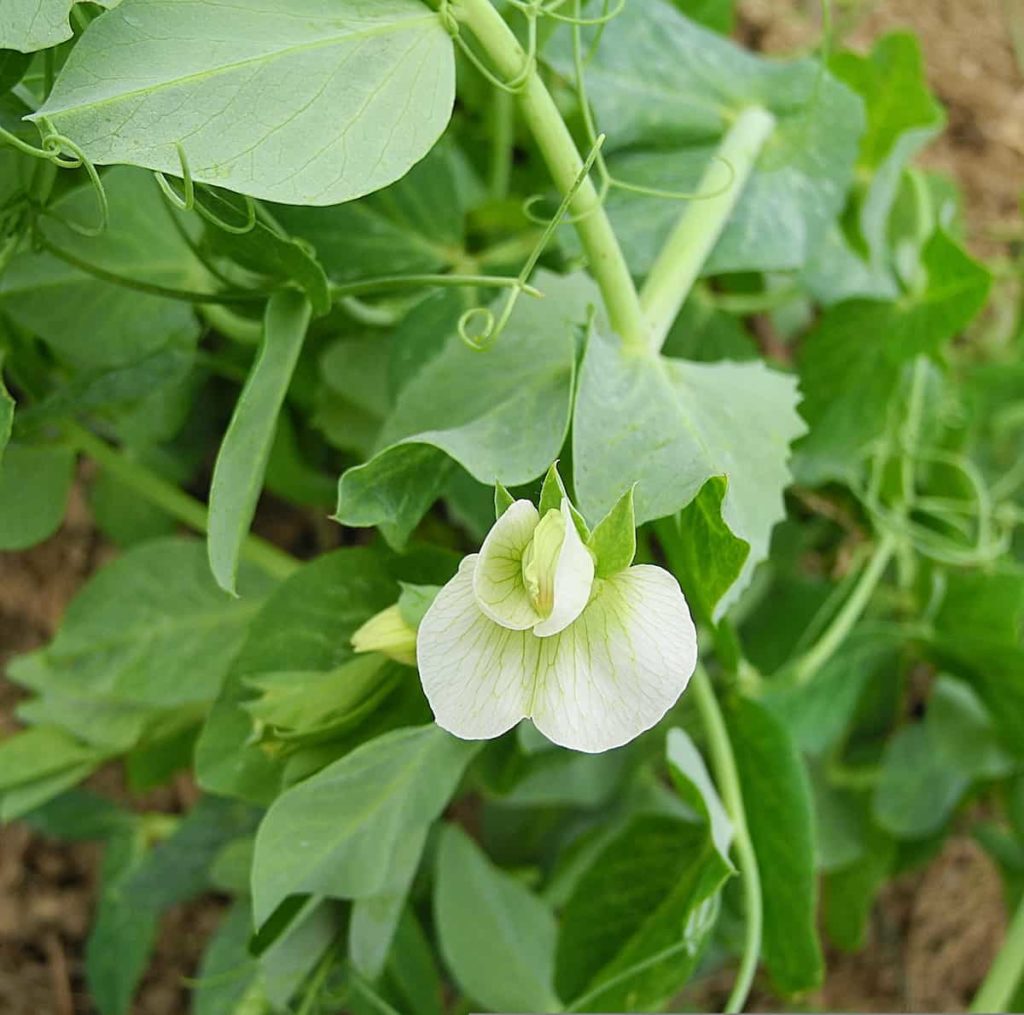
How long do pea plants take to grow?
Most peas are harvested 60 to 70 days after sowing. Pull the pea pods from the pea vine while holding the vine steady with the other. Peas should be cooled in a cold water bath immediately after plucking and then dried. Peas have the finest taste when eaten immediately after they have been picked. It is normal for them to keep in the fridge for a week.
When harvesting English peas, wait until the pods are almost spherical. Peas should be shelled immediately after plucking. The pods of English peas are inedible. Thus, they need to be removed before consumption. To harvest snow peas, wait until the pods have grown to the length specified on the seed packaging. At this point, the peas within the pod should be hardly perceptible.
Before cooking, you’ll want to remove the stringy fibers from snow peas that have them along the seams. Young, delicate, swelling but not fully plump sugar snap pea pods should be selected. Some sugar snap peas, like snow peas, have stringy threads across the seams that need to be removed before cooking. A stir-fry is enhanced by including pea shoots, the young, tender leaves of any kind of pea pod that can be eaten. Harvest by pinching off a branch just above a leaf node.
Do pea plants grow quickly?
There is a short time frame between sowing and harvesting (57 to 72 days) because of how quickly the plant grows. Peas are a popular crop for amateur gardeners, with many people tending their plots of land each year. When planted too tightly, the pea plants’ thick roots can get tangled and injured, hindering their growth. Allow adequate space between seedlings for the rows to mature.
Rows should be spaced 18–24 inches apart, and seeds within a row should be sown at least an inch apart. Pea plants don’t start to the vine for around two weeks after planting. Except for bush varieties of peas, the vines will require a nearby pole or trellis approximately 5 feet in height to grow properly.
Pea bushes reach a maximum height of 2 feet and are strong enough to hold their own. Pea pods blossom a few weeks after trellising and are ready to pick only a week later. Peas of the Spring variety can be harvested 54–57 days after planting, while those of the Sparkle and Green Arrow varieties require 60–70 days, and those of the Snowbird, Dwarf, Gray Sugar, and Snowflake varieties take no more than 72 days.
What do I feed peas?
As legumes, peas can fix their nitrogen; hence fertilizing with nitrogen-rich feeds can result in lush new growth but lower pea yields. Vegetables produced in rich soil rich in the organic matter do not need supplemental feeding. Leave the spent pea plants’ roots in the garden until next year. Because of this, all the nitrogen the roots have taken up will remain in the ground rather than leaching out. Next year, put nitrogen-hungry crops like brassicas here, and they’ll thrive.
In case you missed it: How to Grow Green Chilli Peppers Faster: Best Tips to Increase Flowering, Fruiting, and Production Yield
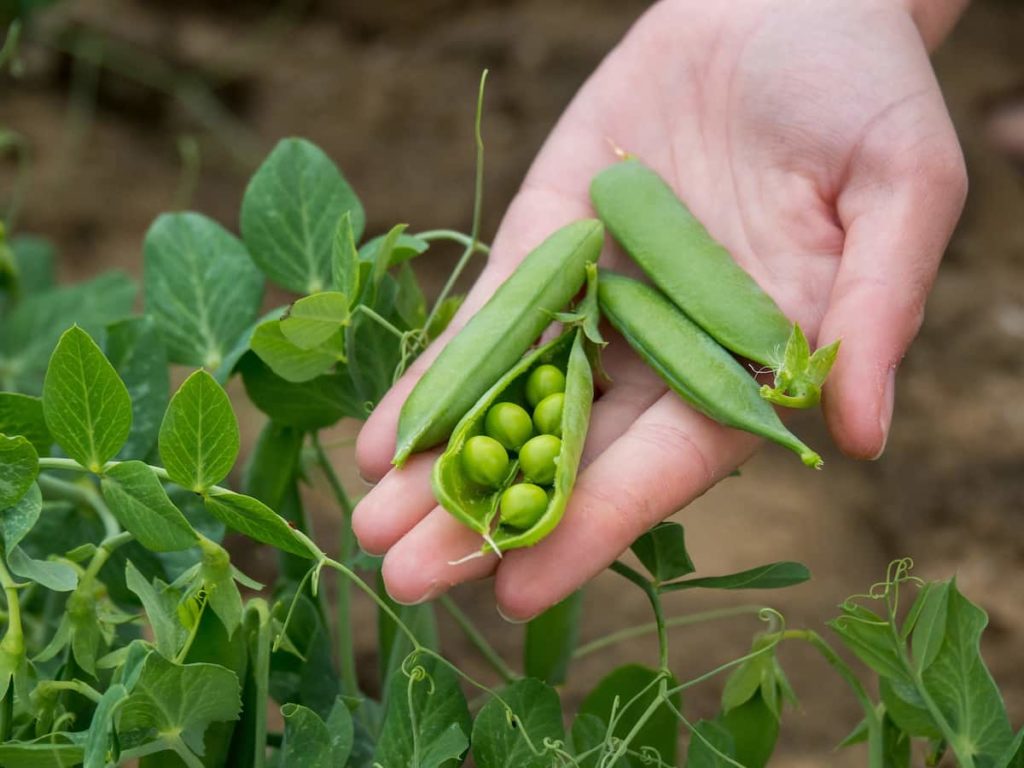
How often do you water peas?
Peas can only grow and produce fruit if given a reasonable quantity of water. Peas don’t need more than a weekly watering, but they perform best with consistent hydration throughout the season. Since peas wilt in high temperatures, they need to be watered more often throughout the summer and in places with very hot climates. In hot weather, water your pea plants in the morning to prevent burning their leaves. Budding, yield, and flower production can all be kept in check, as well as the plant’s overall health, by watering the plant first thing in the morning.
If you want your peas to thrive in their new environment, give them a good soaking shortly after you plant them. Check soil moisture levels daily and water them at least an inch weekly to prevent them from drying. During pod-forming and flowering, pea plants may need an inch of water each week or more regularly.
Do peas need sun or shade?
Peas need 6 to 8 hours of daily sun. Peas can tolerate some shade, but their growth will be slower. Peas thrive on fertile, well-drained soil with a pH of 6 to 7.5. Completed compost should be applied and worked into the top few inches of soil to ensure the pea seeds have a healthy start. Spread pea seeds straight outdoors, not in containers, for optimum results. Germination takes 14 days. Warm water can speed germination by 24 hours.
Conclusion
Growing peas is simple as long as you keep the soil wet and look out for pests and diseases. Be careful to rotate your crops to prevent pests and diseases from becoming problematic. Approximately two months after planting, most types of peas can be picked. Harvesting time can be shortened with some types. Peas are annuals, which means their whole life cycle occurs over a single growing season. However, seeds can be saved for use in subsequent crops.
- Management Pests and Diseases in Your Cotton Field
- Sheep Farming Business Plan for Beginners
- Aquaponic Farming at Home: A Step-By-Step Guide
- Profitable Village Farming Business Ideas in 2024
- High-Yield Aquaculture: Fast-Growing Fish for Farming
- Effective Fish Pond Construction Techniques for Beginners
- Irrigation and Water Management in Pineapple Farming
- Blossom to Harvest: Mastering Flowering and Pollination in Papaya Farming
- Pig Fattening Essentials: From Selection to Sale for Beginners
- Raising Wagyu Cattle: A Complete Guide for Premium Beef Production
- Soil Types and Their Water Holding Capacity
- Optimizing Irrigation Schedules for Coconut Groves for Enhanced Yield
- Espresso Your Garden: Coffee Grounds for Healthier Acid-Loving Plants
- The Best Soil Mix for Snake Plants: How to Mix Your Own Snake Plant Soil
- Green Thumb Success: Expert Tips for Cultivating Greenhouse Beans All Year Round
- Bloom All Year Round: The Ultimate Guide to Indoor Hyacinth Care
- Eco-Friendly Gardening: How to Make Liquid Fertilizer from Kitchen Waste
- Ultimate Guide to Grow Anise in Pots: Explore Seed Propagation to Harvesting
- Guide to Raising Chester White Pigs: Discover Breed Facts to Growth Management
- Mastering the Elegance: The Ultimate Guide to Weeping Cherry Tree Care, Planting, and Maintenance
- Ultimate Guide to Planting Garlic in Grow Bags: Growing Strategies for Beginners
- How to Fix Spider Plant Leaf-Related Problems: Natural and Organic Remedies
- 10 Reasons Why Your Tulsi Plant is Shedding Leaves: Home Remedies and Solutions
- Optimizing Growth and Yield: The Advantages of Palm Bunch Ash Fertilizer
- Utilizing Neem Oil Extract as a Natural Pesticide for Hydrangea
- From Soil to Harvest: Various Ways in Which Farmers Can Use AI Tools
- Steps to Encourage and Induce Citrus Flowers: A Comprehensive Guide
- How to Fix Snake Plant Leaf-Related Issues: Natural and Organic Remedies
- Transform Your Garden into a Fragrant Oasis with Raat Ki Rani (Night Blooming Jasmine)
- Discover the Ideal Chicken Breeds for Philippine Farms
- How to Create a Poultry Egg Farm Business Plan for Profits
- Grow Lemon Cucumbers Like a Pro: Insider Techniques for Bountiful Yields
- Ultimate Guide to Caring for Your Pink Princess Philodendron: Tips for Thriving Variegation
- Areca Nut Profit Per Acre: Calculating Yield and Cost of Cultivation
- How Kaveri Chicken is Becoming a More Profitable Breed in Indian Backyards
- Transform Your Barn: 9 Steps to Convert a Horse Stall into a Chicken Coop
